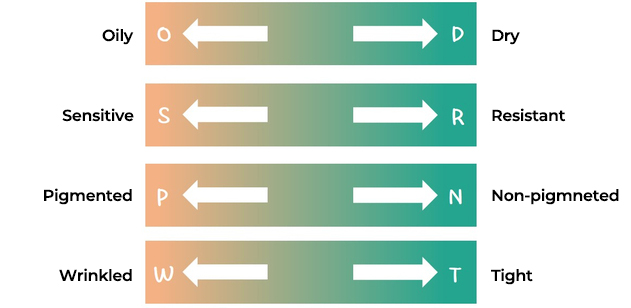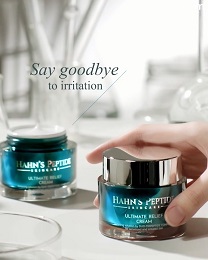한스펩타이드 고객센터
고객 여러분들의 만족을 위해 최선을 다하겠습니다.
Now meet the value beyond skincare
Advanced Tri-peptide Formula
based on Exclusive SE-Tripeptide™ Biotechnology
Skincare Column
HOME
![]() HP.LAB
HP.LAB
![]() Skincare Column
Skincare Column
WHAT IS THE BAUMANN SKIN TYPE TEST?
Just like everyone differs in personality, we all have different skin types.
So, if you want to maintain your skin health in a smart way, it is important to understand what your skin type is.
In the early 1900s, skin types used to be classified into the dry, oily, sensitive, combination, and normal.
However, as more studies were carried out regarding our skin as time passes and the cosmetics industry has made more development, it was concluded that there is a limitation to classify our skin into just 5 different types.
In 2000, Leslie Baumann, a dermatologist, subdivided the skin types into a total of 16 kinds based on four indicators including oily-dry, sensitive-resistance, pigmented-non-pigmented, wrinkled-tight and published the research paper for a new skin type classification.
This new skin type classification is called the Bauman skin types, so let’s discuss the four indicators and how to take care of the skin according to the different types.
BAUMANN SKIN TYPE INDICATORS
1. Oily - Dry
The amount of sebum secreted from your skin decides if your skin is oily or dry.
Sebum, which is an oil layer covering the skin surface, plays an important role in maintaining skin moisture. So, a dry skin type has a rough skin texture which gives dull skin most of the time and is characterized by tight skin. On the other hand, an oily skin type is prone to acne due to the high amount of sebum secretion.
“You can check your skin condition by confirming if your skin feels tight after 2~3 hours of cleansing. If your skin feels tight right after washing your face, then you have a dry skin type.”
2. Sensitive - Resistant
Sensitive-Resistance differs by the conditions of the stratum corneum. The skin barrier of the stratum corneum prevents the entry of allergic or irritating substances to the skin from the outside. So, if your skin becomes sensitive due to the damage of the skin barrier, the skin becomes easily red or experiences an itchiness or burning feeling from an external irritation or cosmetic products. For resistant skin with a firm skin barrier, it experiences less side effects by using cosmetics but the effects of using cosmetics may be reduced because of the low absorption due to a thick stratum corneum.
“Your skin is sensitive if you have ever received treatment for skin disease or suffered from one. If you have no issues with using any kind of products, then your skin type is resistant.”
3. Pigmented - Non-pigmented
Pigmented or non-pigmented is classified by the presence of pigmentation, and it measures the possibilities of freckles or pigmentations to occur. If you have bright skin with freckles or blemishes, your skin is pigmented, while if your skin is dark, even, and free from any blemishes of pigmentation, your skin is a non-pigmented type.
“Your skin is pigmented if the scar on your face does not fade away after 6 months and pigmentation is retained. The presence of freckles or blemishes refer to one that has pigmented skin, and most Asians have pigmented skin If your face reddens only under sunlight, then your skin is non-pigmented.”
4. Wrinkled - Tight
Wrinkled-Tight determines the progression of wrinkles based on skin elasticity and the presence of wrinkles.
Since wrinkles are one of the
representative symptoms of skin aging, it is necessary to take account of both
the genetic and environmental factors including exposure to
UV rays.
“If your skin looks young, then you have tight skin. However, if your skin looks old or you do a lot of outdoor activities, then you have wrinkled skin.”








 이전글
이전글
 다음글
다음글